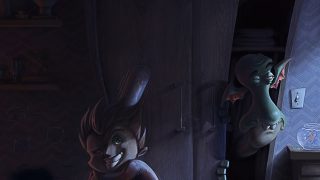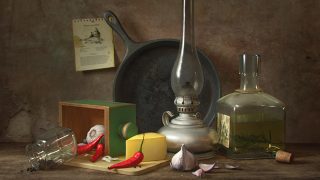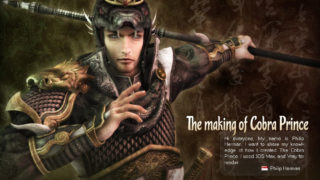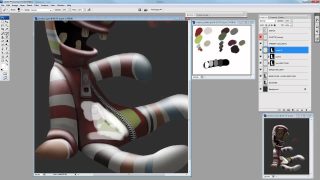
The Making of Diet Pepsi
The following paper provides a brief, detailed description of some of the technical aspects involved in producing the “Diet Pepsi After Hours” spot. A general/advanced knowledge of computer graphics and animation is recommended.
 |
||||
 |
August 25, 2005 | Stryker The following paper provides a brief, detailed description of some of the technical aspects involved in producing the “Diet Pepsi After Hours” spot. A general/advanced knowledge of computer graphics and animation is recommended. Diet Pepsi “After Hours” was completed in about one and half months, with a crew of about 8 core artists at Redrover Animation Studios Ltd. We worked quite closely with the creative directors from DDB New York and focused heavily on creating an animatic we were all pleased with. This took quite some time, and although the animatic eventually reached a point at which we could begin production, it was never really locked down up until the very last moment. Even after the final production was completed and had gone to air, we still made improvements in various areas, with the intention of replacing the airplay version with our newer version. The initial pitch to get the Diet Pepsi job involved a short animated test on our behalf. We decided to choose a simple but energetic line (John Candy from “Planes, Trains and Automobiles”) and animate a test scene to it. Since we had previously done a spot for Mountain Dew (a PepsiCola product), we decided to restore the files and use these for our test. The purpose, after all, was not to showcase the texturing, but rather to showcase the animation. We did a total of three tests. The first focused on animation as well as lighting, rendering and compositing while the other two focused specifically on animation. For the first test, I created a backdrop of Mountain Dew products and positioned them in an arc so that your eye would be directed to the centre where our acting was to take place. There would be a total of two animated cans so sufficient room for acting had to be taken into account. I also lit the scene in a stylized manner, so that I could imitate it in the computer for a realistic integrated match. The background plate suggests we are in a store, the story concept which was presented for the spot. Below is the first of these tests. Modeling/rigging by Ben Pilgrim. Animation by Kyle Dunlevy. Photography, texturing, lighting, rendering and compositing by Richard Rosenman.
|
 |
When we finished this test, we felt that although it was nicely integrated into the background, the focus was no longer on the characters, but rather the scene as a whole. Since we wanted to focus on animation in specific, we decided to recomposite the scene without the background, simply the cans. This was the second test we produced which is shown below. Modeling/rigging by Ben Pilgrim. Animation by Kyle Dunlevy. Texturing, lighting, rendering and compositing by Richard Rosenman.
When we presented these tests to the creative team at DDB New York, they were impressed but they felt that the animation was too ‘rubbery’. This was a result of pushing the performances too far. Therefore, we decided to record our own scratch line and animate another test with much more subtle animation. When we presented this, the creative team was much more pleased with the performance and acting. This was the third test we produced which is shown below. Modeling/rigging by Ben Pilgrim. Animation by Kyle Dunlevy. Texturing, lighting, rendering and compositing by Richard Rosenman.
|
 |
 |
||
 |
One of the most challenging aspects in creating the commercial was creating the textures of the cans. Because this was to be an American spot, we had to receive American Diet Coke and Diet Pepsi cans with which we could work. The labelling is actually quite different between USA and CANADA and thus required separate artwork altogether. While acquiring the Diet Pepsi Illustrator artwork was no problem, getting a hold of the Diet Coke artwork was impossible. This was particularly aggravating since the Diet Coke can is highly reflective and thus scanning the texture would be extremely difficult. Nevertheless, this was our only option (short of photographing it) so I began the all-to-farmiliar task of cutting up the can in order to be able to flatten it out for scanning. The cutting (surgery) of the can was fairly simple and I was able to achieve a clean cut with minimal tin creasing using a standard can opener. The top was first cut out, then the base as well with an Exacto knife. The next step was to slice the tapered parts of the can so that they too could be unfolded although this unfortunately led to further distortion of the label. Once the can was successfully flattened out, it was put on the scanner and scanned at high resolution in order to pick up the details of the label. The scanned result, despite the high reflectance of the Diet Coke label, actually turned out quite decent and after a considerable amount of Photoshop work and image reconstruction, a fully flattened texture was produced. Once the diffuse texture had been created, a separate mask texture had to be created for the reflections. This mask would dictate which parts of the can would be more reflective and the same had to be done for the Diet Pepsi cans. Once again, this was particularly challenging as they had to be derived from the diffuse map and a considerable amount of Photoshop work and image reconstruction was also required for this. However, the reflection mask was an absolute necessity in order to achieve a realistic representation of the real can. Below Diffuse and Reflection maps for the corresponding cans.
Once the textures had been fully created, and the can models built, some initial rendertests were performed in order to ensure the textures were working properly. This was done, as I usually do, through the creation of a model rotation animation with generic lighting rigs. The results are below, two different rotations in two different lighting conditions. Both tests were fairly successful in producing a realistic Diet Coke and Diet Pepsi can. Texturing, lighting, rendering and compositing by Richard Rosenman.
|
 |
[pagebreak]
 |
||
 |
Texturing, lighting, rendering and compositing by Richard Rosenman. DOWNLOAD Early in the production, I suggested we attempt a test to create a more realistic bending can, in order to minimize the ‘rubbery’ appearance which had so far been a recurring problem. I decided to try a test in which the can would crease and crumple as it turned, but have the creases disappear every time the can came back to its default modeled position. This was achieved through the use of animated displacement maps which were keyed in unison with the animation. The further (or more extreme) the can would turn, the greater the amount of displacement. Below is the test I created using this technique, although it was decided afterwards that this effect was too unappealing and we decided to can it, no pun intended. While there were various other characters, they were all made up and therefore none had to be modeled from pre-existing products. The only issue with these characters were label copyrighting issues which were constantly being checked and modified for fear of copyright infringement. Diet Pepsi “After hours” was was modeled, textured and animated with 3D Studio MAX 6.0, rendered with VRay 1.45.70 using global illumination techniques in combination with traditional lighting rigs, and composited with Combustion.
|
 |

















